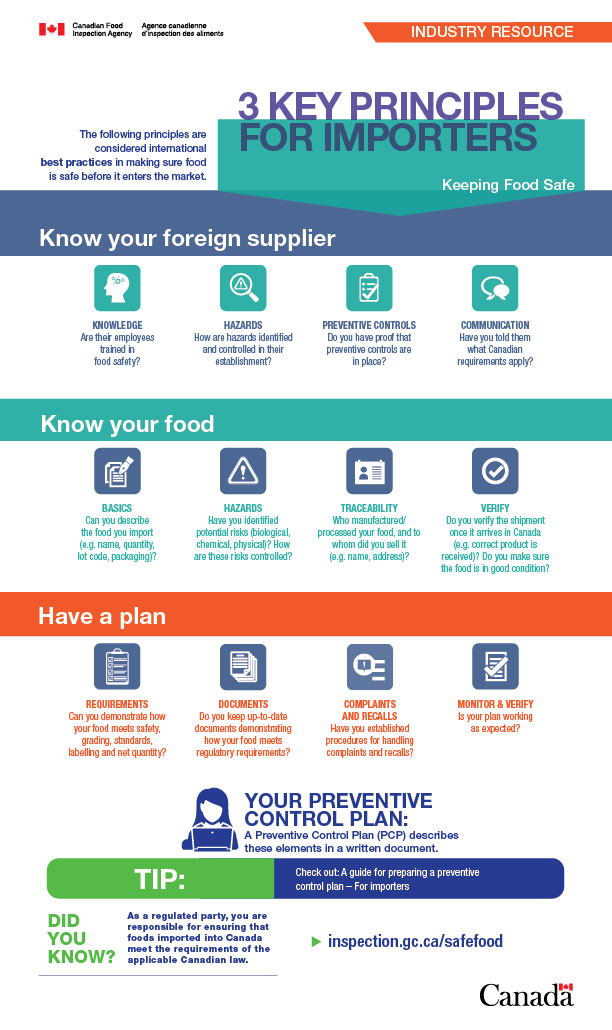
Description of infographic: How to Keep Food Safe: 3 Key Principles for Importers
Keeping food safe
The following principles are considered international best practices in making sure food is safe before it enters the market.
Know Your Foreign Supplier:
- Knowledgeable: Are their employees experienced in food safety?
- Hazards: How are hazards identified and controlled in their establishment?
- Preventive Controls: Do you have proof that preventive controls are in place?
- Communication: Have you told them what Canadian requirements apply?
Know Your Food:
- Basics: Can you describe the food you import (for example, name, quantity, lot code, packaging)?
- Hazards: Have you identified potential risks (biological, chemical and physical)? How are these risks controlled?
- Traceability: Who manufactured/ processed your food, and to whom did you sell it (e.g. name, address)?
- Verify: Do you verify the shipment once it arrives in Canada (e.g. correct product is received)? Do you make sure the food is in good condition?
Have A Plan:
- Requirements: Can you demonstrate how your food meets safety, grading, standards, labelling and net quantity?
- Documents: Do you keep up-to-date documents demonstrating how your food meets regulatory requirements?
- Complaints and Recalls: Have you established procedures for handling complaints and recalls?
- Monitor & verify: Is your plan working as expected?
Your Preventive Control Plan:
A Preventive Control Plan (PCP) describes these elements in a written document.
Tip: Check out the guide for preparing a preventive control plan - For importers.
Did you know?
As a regulated party, you are responsible for ensuring that foods imported into Canada meet the requirements of the applicable Canadian law.
